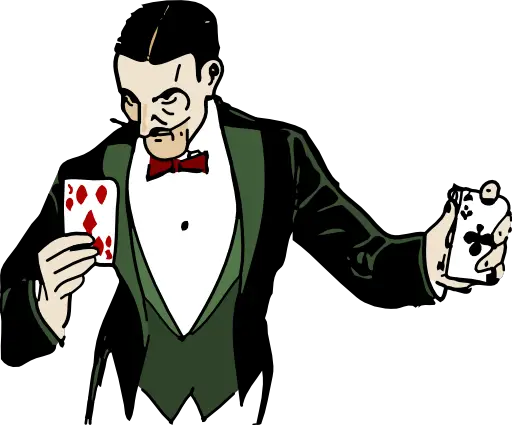Support our educational content for free when you purchase through links on our site. Learn more
What Are Brainteaser Questions? 101 Mind-Bending Puzzles to Challenge Your Thinking! 🧠
Have you ever found yourself scratching your head over a riddle or a puzzling question that seems deceptively simple? Welcome to the world of brainteaser questions! In this article, we’ll explore 101 brainteaser questions that will not only challenge your mental agility but also entertain you and your friends. From classic riddles to lateral thinking puzzles, these brainteasers are perfect for sharpening your problem-solving skills or impressing your colleagues in an interview setting.
Did you know that brainteasers have been used for centuries, serving as both entertainment and educational tools? Imagine sitting around a fire in ancient Mesopotamia, sharing riddles that would stump even the wisest among you. Fast forward to today, and these mental workouts remain as relevant as ever, especially in high-pressure environments like job interviews. So, are you ready to dive into the fascinating world of brainteasers and discover how they can enhance your cognitive abilities? Let’s unlock the secrets together!
Key Takeaways
- Brainteaser questions are designed to challenge your problem-solving and critical thinking skills.
- They come in various formats, including riddles, logic puzzles, and lateral thinking challenges.
- Employers use brainteasers in interviews to assess candidates’ creativity and communication skills.
- Practicing brainteasers can sharpen your cognitive abilities and provide a fun way to engage with friends.
- Explore brainteaser products and resources to enhance your skills: Shop Brain Teasers on Amazon | Shop Logic Puzzles on Amazon.
Get ready to put your thinking cap on and dive into the brain-teasing adventure that awaits! 🧩✨
Table of Contents
- Quick Tips and Facts about Brainteasers 🧠
- The Fascinating World of Brainteasers: A Brief History 📜
- What Are Brainteaser Questions? 🤔
- Why Do Employers Use Brainteaser Questions in Interviews? 💼
- Brainteasers: The Good, The Bad, and The Ugly ⚖️
- Types of Brainteaser Questions You Might Encounter 🔍
- How to Prepare for Brainteaser Questions: Tips and Tricks 🏆
- How to Tackle Interview Brainteaser Questions Like a Pro 💪
- Brainteaser Questions with Answers: Examples to Get You Started 📚
- Want to Learn More About How FIRMSconsulting Can Help Your Organization? 🌟
- Case Interview Quizzes: Are You Ready for McKinsey, BCG, Bain, and More? (416 PAGES) 📊
- Transitioning to Your First Paying Client: Tips for Success 🚀
- You Can Be More Successful Than All of Them: Strategies for Excellence 🌈
- Conclusion: Wrapping Up the Brainteaser Adventure 🎉
- Recommended Links for Further Exploration 🔗
- FAQ: Your Brainteaser Questions Answered ❓
- Reference Links for Deep Dives 📖
Quick Tips and Facts about Brainteasers 🧠
Here at Mind Trick™, we love a good brainteaser! They’re like mental puzzles, challenging your thinking in unexpected ways. Think of them as the mischievous cousins of card tricks: both play with perception and expectation.
But before you dive into the deep end of riddles and logic puzzles, here are some quick tips to keep in mind:
- Don’t overthink it! Sometimes the simplest answer is the right one. Remember, brainteasers often rely on wordplay or a shift in perspective.
- Embrace the “Aha!” moment. That feeling of sudden understanding is what makes brainteasers so satisfying.
- It’s okay to take a break. If you’re feeling stuck, step away for a bit and come back with fresh eyes. You might be surprised at what you notice!
Fun Fact: Did you know that the world’s oldest recorded riddle dates back to ancient Mesopotamia? It goes like this: “There is a house. One enters it blind and comes out seeing. What is it?” (Answer: A school!)
Want to test your wit? Check out these mind trick questions with answers!
The Fascinating World of Brainteasers: A Brief History 📜
Believe it or not, brainteasers have been around for centuries! From ancient riddles to modern-day logic puzzles, these mental workouts have captivated minds across cultures and time periods.
Early Riddles and Their Cultural Significance
In ancient civilizations, riddles weren’t just a form of entertainment—they were often used as:
- Tests of wisdom: Think of the Sphinx’s riddle in Greek mythology!
- Teaching tools: Riddles helped make learning more engaging and memorable.
- Forms of social bonding: People would gather to share and solve riddles together.
The Evolution of Brainteasers: From Wordplay to Logic Puzzles
Over time, brainteasers evolved to encompass a wider range of formats and challenges. We saw the rise of:
- Mathematical puzzles: Think Fibonacci sequences and geometric problems.
- Logic grids: These require deductive reasoning to solve.
- Lateral thinking puzzles: These often involve finding creative and unexpected solutions.
Brainteasers in the Modern World
Today, brainteasers are more popular than ever. They’re used in:
- Job interviews: (More on that later!)
- Educational settings: To enhance critical thinking skills.
- Games and entertainment: From Sudoku to escape rooms, brainteasers provide a fun and challenging way to exercise our minds.
Quote from “Interview Brainteasers: What They Are and Why They Matter“: “Interview brain teaser questions are puzzles or logic problems that are used during job interviews to assess a candidate’s problem-solving skills, creativity, critical thinking, and ability to think outside the box.”
What Are Brainteaser Questions? 🤔
At their core, brainteaser questions are like mini mental workouts disguised as puzzles. They’re designed to make you think differently, challenging your usual problem-solving approaches.
Key Characteristics of Brainteasers:
- Open-Ended: There’s often no single “right” answer.
- Require Creative Thinking: You’ll need to think outside the box and explore unconventional solutions.
- Focus on the “How” Not the “What”: The process of arriving at an answer is just as important as the answer itself.
Examples of Brainteaser Questions:
- Classic Riddle: What has an eye but cannot see? (Answer: A needle)
- Logic Puzzle: You have two ropes, each of which takes one hour to burn completely. How can you measure 45 minutes using only the ropes and a lighter?
- Lateral Thinking Puzzle: A man is found dead in a field wearing a backpack. The backpack is open, but there’s nothing in it. How did he die?
Why Do Employers Use Brainteaser Questions in Interviews? 💼
You’re in a job interview, and suddenly you’re asked, “How many ping pong balls fit in a Boeing 747?” Don’t panic! While these curveball questions might seem bizarre, there’s a method to the madness.
What Are Interviewers Looking For?
- Problem-Solving Skills: How do you approach a challenge? Are you logical, structured, or creatively resourceful?
- Critical Thinking: Can you analyze information, identify assumptions, and form sound judgments?
- Communication: Can you clearly articulate your thought process, even if you don’t have all the answers?
- Grace Under Pressure: How do you handle the unexpected? Do you stay calm, collected, and adaptable?
The Debate Around Brainteasers in Interviews
While some companies swear by brainteasers, others have moved away from them. Here’s why:
- ✅ Proponents argue: Brainteasers provide a glimpse into a candidate’s raw cognitive abilities and how they think on their feet.
- ❌ Critics argue: Brainteasers can be stressful, irrelevant to the actual job, and biased towards those who have encountered them before.
Quote from “Interview Brain Teaser Questions: A Summary“: “These types of questions are often used in technical, engineering, and finance-related roles, but they can also be found in other industries as well.”
Brainteasers: The Good, The Bad, and The Ugly ⚖️
Like a magic trick that can both amaze and confound, brainteasers have their share of pros and cons. Let’s break down the arguments:
Advantages of Brainteasers:
- Cognitive Benefits: Regularly engaging with brainteasers can sharpen your:
- Memory: Recalling patterns and information.
- Attention to detail: Spotting subtle clues.
- Mental flexibility: Shifting between different perspectives.
- Fun and Engaging: Brainteasers can be a playful way to challenge yourself and keep your mind sharp.
Disadvantages of Brainteasers:
- Potential for Frustration: Getting stuck on a difficult brainteaser can be disheartening, especially under pressure.
- Not Always Job-Relevant: The skills tested by brainteasers might not directly translate to the requirements of a specific role.
- Risk of Bias: Familiarity with certain types of brainteasers can give some candidates an unfair advantage.
Tip from the Mind Trick™ Team: If you’re using brainteasers for personal development, focus on the process of problem-solving rather than just finding the “right” answer. Enjoy the journey!
Types of Brainteaser Questions You Might Encounter 🔍
Brainteaser questions come in various flavors, each designed to tickle your brain in different ways. Let’s explore some common categories:
1. Riddles
These often rely on wordplay, metaphors, or double meanings to trick your brain.
- Example: What has to be broken before you can use it? (Answer: An egg)
2. Logic Puzzles
These present a scenario and require you to use deductive reasoning to find the solution.
- Example: You have 12 coins, and one is either heavier or lighter than the others. Can you find the odd coin and determine if it’s heavier or lighter in just three weighings using a balance scale?
3. Lateral Thinking Puzzles
These demand a creative and unconventional approach, often involving a shift in perspective.
- Example: A man is driving down the road. He turns left, right, left, right, and left again. He sees a house with all its lights on. He stops the car and screams in horror. Why? (Think about what he might be driving!)
4. Mathematical Puzzles
These involve numerical patterns, sequences, or calculations.
- Example: What is the next number in this sequence: 1, 1, 2, 3, 5, 8…? (Answer: 13, it’s the Fibonacci sequence)
5. Spatial Reasoning Puzzles
These test your ability to visualize and manipulate objects in your mind.
- Example: Can you mentally fold a flat piece of paper into a specific 3D shape?
How to Prepare for Brainteaser Questions: Tips and Tricks 🏆
While you can’t predict the exact brainteaser you’ll encounter in an interview or social setting, you can definitely prepare your mind to tackle these challenges with confidence.
1. Practice Makes Perfect (or at Least Progress!)
- Solve a Variety of Brainteasers: Familiarize yourself with different types of brainteasers. Websites like Brainzilla and Get Riddles are great resources.
- Time Yourself: See how quickly you can solve brainteasers to get comfortable with thinking under pressure.
2. Sharpen Your Mental Toolkit
- Brush Up on Basic Math Concepts: Understanding ratios, probabilities, and sequences can be helpful.
- Improve Your Logic Skills: Practice deductive reasoning and identifying patterns.
- Read Widely: Expanding your general knowledge can provide unexpected insights and connections.
3. Master the Art of the Interview Approach
- Think Aloud: Articulate your thought process clearly, even if you’re unsure of the answer.
- Ask Clarifying Questions: Don’t be afraid to seek clarification if the question is unclear.
- Stay Calm and Positive: Maintain a confident demeanor, even if you’re struggling.
Remember: The goal is not necessarily to know the answer immediately but to demonstrate your ability to think critically, solve problems, and communicate effectively.
How to Tackle Interview Brainteaser Questions Like a Pro 💪
The moment has arrived—you’re faced with a brain-bending question in an interview. Here’s how to navigate the situation like a champion:
1. Listen Carefully and Don’t Panic!
- Take a Deep Breath: A calm mind thinks more clearly.
- Jot Down Key Information: Note down any numbers, constraints, or important details.
2. Break Down the Problem
- Identify the Goal: What are you ultimately trying to solve or figure out?
- Look for Patterns or Relationships: Are there any connections between the elements of the problem?
3. Consider Different Approaches
- Start with the Obvious: Is there a straightforward solution?
- Think Outside the Box: What are some unconventional or creative ways to approach the problem?
- Use Examples or Analogies: Can you relate the problem to something familiar to help you understand it better?
4. Communicate Your Thought Process Clearly
- Explain Your Reasoning: Walk the interviewer through your steps, even if you hit dead ends.
- Don’t Be Afraid to Backtrack: If a particular approach isn’t working, acknowledge it and try something else.
5. If You’re Stumped, Don’t Give Up!
- Ask for Hints: It’s perfectly acceptable to ask for guidance.
- Show Your Enthusiasm: Demonstrate that you’re engaged in the challenge, even if you don’t have all the answers.
Remember: Interviewers are often more interested in your problem-solving process and communication skills than in whether you arrive at the “perfect” solution.
Brainteaser Questions with Answers: Examples to Get You Started 📚
Ready to put your brain to the test? Here are some brainteaser questions to get you started. Remember to think carefully and don’t be afraid to get creative!
1. The Classic “How Many?” Riddle
Question: How many golf balls can you fit in a school bus?
Answer: This is a classic estimation problem. There’s no right answer, but the interviewer is looking for your thought process. Consider the size of a golf ball, the volume of a school bus, and factor in some empty space.
2. The River Crossing Puzzle
Question: A farmer has to transport a fox, a chicken, and a sack of grain across a river. He has a small boat that can only carry him and one other item at a time. He can’t leave the fox alone with the chicken or the chicken alone with the grain. How can he safely transport everything across the river?
Answer: This is a classic logic puzzle. Here’s one solution:
- Take the chicken across the river.
- Return alone.
- Take the fox across the river.
- Bring the chicken back.
- Take the grain across the river.
- Return alone.
- Take the chicken across the river.
3. The Light Bulb Mystery
Question: You are in a room with three light switches. Each switch controls one of three light bulbs in an adjacent room. You can manipulate the switches however you like, but you can only enter the room with the light bulbs once. How can you determine which switch controls which bulb?
Answer: This is a classic physics-based puzzle:
- Flip switch #1 and leave it on for a few minutes.
- Turn off switch #1 and flip on switch #2.
- Enter the room with the light bulbs.
- The bulb that is on is controlled by switch #2.
- The bulb that is off but warm is controlled by switch #1.
- The bulb that is off and cold is controlled by switch #3 (the one you didn’t touch).
4. The Man in the Bar Riddle
Question: A man walks into a bar and asks for a glass of water. The bartender pulls out a gun and points it at the man. The man says “Thank you!” and walks out. What happened?
Answer: This is a classic lateral thinking puzzle. The man had hiccups, and the bartender recognized this. The bartender’s actions startled the man, curing his hiccups.
5. The 100 Doors Problem
Question: You are standing in a hallway with 100 closed doors. You make 100 passes down the hallway. On the first pass, you open every door. On the second pass, you close every second door (doors 2, 4, 6, etc.). On the third pass, you change the state of every third door (if it’s closed, you open it; if it’s open, you close it). You continue this pattern for all 100 passes. Which doors will be open at the end?
Answer: This is a math-based puzzle. The doors that will be open at the end are the ones with a perfect square as their door number: 1, 4, 9, 16, 25, 36, 49, 64, 81, and 100. This is because these doors will be interacted with a number of times equal to their number of factors (including 1 and themselves), resulting in an odd number of interactions and thus ending in an open state.
Want to Learn More About How FIRMSconsulting Can Help Your Organization? 🌟
FIRMSconsulting is a global management consulting firm that helps organizations excel in their respective markets. Visit their website to learn more about their services and how they can assist your organization in achieving its strategic goals.
Case Interview Quizzes: Are You Ready for McKinsey, BCG, Bain, and More? (416 PAGES) 📊
Preparing for case interviews? FIRMSconsulting offers comprehensive resources, including a 416-page case interview quiz book, to help you ace your next interview.
Transitioning to Your First Paying Client: Tips for Success 🚀
Making the leap from theory to practice can be challenging. FIRMSconsulting provides guidance and support to help individuals and businesses successfully transition to working with paying clients.
You Can Be More Successful Than All of Them: Strategies for Excellence 🌈
At Mind Trick™, we believe in unlocking your full potential. Just like mastering the art of magic psychology or pulling off incredible levitation illusions, success requires a combination of skill, strategy, and mindset. Embrace the challenge, and you’ll be amazed at what you can achieve.
Conclusion: Wrapping Up the Brainteaser Adventure 🎉
We’ve journeyed through the intriguing world of brainteasers, from their historical roots to their modern applications in interviews and beyond. Whether you’re looking to sharpen your cognitive skills, prepare for a job interview, or simply have some fun with friends, brainteasers offer a wealth of opportunities for mental exercise.
Summary of Positives and Negatives
Positives:
- Enhance Problem-Solving Skills: Engaging with brainteasers regularly can significantly improve your critical thinking and creativity.
- Fun and Engaging: They provide a playful way to challenge yourself and bond with others.
- Diverse Formats: From riddles to logic puzzles, there’s a type of brainteaser for everyone.
Negatives:
- Potential for Frustration: Some brainteasers can be challenging, leading to feelings of stress or inadequacy if you’re stuck.
- Not Always Relevant: In interview settings, they may not accurately reflect job performance or skills.
- Familiarity Bias: Those who have encountered similar brainteasers before may have an unfair advantage.
Final Recommendation: Dive into the world of brainteasers! They not only sharpen your mind but also provide a fantastic way to engage with friends and family. Just remember to keep it light-hearted and enjoy the process! 🧠✨
Recommended Links for Further Exploration 🔗
Shop Brain Teasers on Amazon
Shop Logic Puzzles on Amazon
Shop Riddles Books on Amazon
Shop Mind Games on Amazon
FAQ: Your Brainteaser Questions Answered ❓
What do brainteaser questions typically test?
Brainteaser questions are designed to evaluate a variety of skills, including:
- Problem-Solving Ability: How well can you analyze and approach a complex issue?
- Critical Thinking: Can you break down the problem and identify underlying assumptions?
- Creativity: Are you able to think outside the box and come up with unconventional solutions?
- Communication Skills: How effectively can you articulate your thought process and reasoning?
Read more about “25 Mind Trick Questions That Will Leave You Stumped! 🧠✨ …”
What are some good brain questions?
Good brain questions often involve a mix of logic, lateral thinking, and wordplay. Here are a few examples:
- “What can you hold in your right hand but never in your left?” (Answer: Your left hand!)
- “If you drop a yellow hat in the Red Sea, what does it become?” (Answer: Wet!)
- “I speak without a mouth and hear without ears. I have no body, but I come alive with the wind. What am I?” (Answer: An echo.)
Read more about “What are some good brain questions?”
What is an example of a brain teaser with answers?
Example: A farmer has 17 sheep, and all but 9 die. How many are left?
Answer: 9 sheep are left. This brain teaser plays on the wording to mislead the reader into overthinking the question.
Read more about “25 Mind-Blowing Mind Tricks That Will Leave You Speechless … ✨”
What are some mind questions?
Mind questions can encompass a wide range of topics, including logic puzzles, riddles, and lateral thinking challenges. Here are a few:
- “What has keys but can’t open locks?” (Answer: A piano.)
- “A man is pushing his car along a road when he comes to a hotel. He shouts, ‘I’m bankrupt!’ Why?” (Answer: He’s playing Monopoly.)
- “You see a boat filled with people. It has not sunk, but when you look again, you don’t see a single person on the boat. Why?” (Answer: All the people were married!)
Reference Links for Verification 📖
- FIRMSconsulting: Interview Brain Teasers
- Reader’s Digest: 58 Brain Teasers & Mind Puzzles That Will Leave You Stumped
- Brainzilla: Brain Teasers and Puzzles
- Get Riddles: Riddles and Brain Teasers
Feel free to explore these resources to dive deeper into the world of brainteasers! Happy puzzling! 🧩✨






